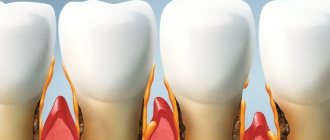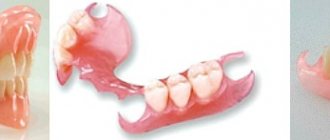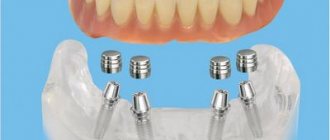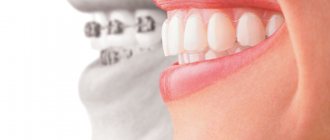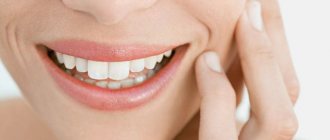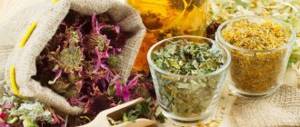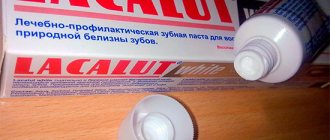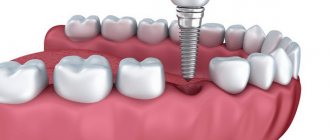From this article you will learn:
- how to choose a rinse for teeth and gums,
- rating of mouthwashes 2020.
- reviews of Listerine, Elmex, Forest Balsam, etc.
Mouth rinses can be a good addition to caring for your teeth and gums. They can be divided into several groups. Firstly, rinses designed to prevent caries. Such products usually contain fluorine compounds - sodium fluoride or amino fluoride, less often - calcium compounds (calcium lactate or synthetic hydroxyapatite).
There are also special rinses that may be intended to treat or prevent gum inflammation, to reduce tooth sensitivity, bad breath, and to reduce the symptoms of xerostomia. Of the second group of rinses, only those for the gums are objectively necessary. As for the rest, keep in mind that they do not do anything better than a good toothpaste designed for the same purpose.
How to choose the right mouthwash -
This article was written by a dentist, and its main goal is to teach you how to navigate the compositions of mouth rinses from different manufacturers so that you can choose the most optimal product for you. Below you will find a rating of the best rinses for teeth and gums for 2020, compiled by our editors (+ recommendations for their use).
If you just want to strengthen your teeth, then you need rinses with an anti-caries effect. In this case, you need to choose products containing fluoride components - such as amino fluoride or sodium fluoride. The fluoride concentration in such products should be about 250 ppm. Some Russian companies (for example, ROCS or SPLAT) produce rinses with calcium compounds - calcium lactate or synthetic hydroxyapatite, which is a structural analogue of tooth enamel.
We consider calcium rinses to be purely marketing products. The fact is that mouthwashes should be used immediately after brushing your teeth. At the same time, if you use toothpaste with fluoride for brushing, then the film of fluoride that forms on the surface of the teeth during brushing will prevent the penetration of calcium during the subsequent rinsing of the mouth. Therefore, a combination is usually prescribed: first brush your teeth with a calcium paste, followed by rinsing your mouth with a fluoride rinse.
In the latter case, the tooth enamel will be saturated with calcium, and the fluoride from the mouthwash will reliably fix calcium in the surface layer of the enamel and will prevent the dissolution of calcium by acids produced by cariogenic bacteria in the oral cavity. But the combination: calcium paste + calcium rinse is completely meaningless. Just after brushing your teeth with a paste with calcium, do not immediately spit out the resulting foam for another 1 minute (during this time more calcium will penetrate the enamel), and you no longer need a mouthwash with calcium...
Important: good mineralization of enamel with calcium is very important, but neither toothpastes nor rinses with calcium themselves have an anti-caries effect.
Let us remember that caries occurs as a result of the dissolution of enamel by acids secreted by cariogenic bacteria. Enamel dissolution begins at an acidity level of pH 5.5. Moreover, calcium in the composition of tooth enamel in itself does not in any way prevent its dissolution. But fluorine forms a protective layer on the surface of the enamel, in the presence of which the enamel begins to dissolve only at a lower pH of 4.5 (i.e., at a significantly higher acid concentration)! This is the anti-caries effect of fluorides.
How to use rinses correctly?
Rinsing removes food debris from the mouth, disinfects the cavity, and soothes sore gums. Most often they are prescribed:
- to relieve acute symptoms of caries, pulpitis, periodontitis - procedures increase blood flow, which helps remove toxins and tissue decay products from the diseased tooth;
- as a preventive measure after tooth extraction - no earlier than on the 3rd day;
- as an auxiliary therapy for gum inflammation, infectious and purulent processes - periodontitis, cyst, granuloma, gumboil.
Rinsing for toothache is only an auxiliary method.
To make the procedure as effective as possible, follow the following recommendations :
- before rinsing, remove food debris from the interdental areas with floss, clean the teeth and surface of the tongue from plaque;
- the temperature of the solution should be from 36°C to 45°C - cold or hot liquids will increase inflammation and burn the mucous membrane;
- during manipulation, attention is paid to the affected area, it is rinsed most intensively;
- rinsing must be done after meals and at night;
- the optimal frequency of manipulations is once every 1 – 2 hours;
- You need to rinse the aching tooth for at least 10 – 15 minutes;
- It is not advisable to eat or drink for half an hour after the procedure.
The rinse solution should be warm.
Rinse your teeth as follows. Approximately one sip of liquid is taken into the mouth. The inflamed area is intensively irrigated for 20–30 seconds, then spat. Repeat several times.
Important! You should not heat the sore spot. Heat accelerates the proliferation of pathogenic microorganisms and accelerates the development of inflammation.
Mouthwashes for caries prevention –
The best fluoride compound in mouthwashes is aminofluoride (synonym: olaflur). In second place is sodium fluoride. These compounds have the highest anti-caries effectiveness. In addition, you will not see antiseptics, antibiotics or alcohol in the anti-caries rinses we have chosen, which means that their use on an ongoing basis will not cause harm to your health. In addition to this, we note that the peculiarity of fluorides is that they themselves inhibit the growth of pathogenic microflora in the oral cavity.
Mouthwash ELMEX “Protection against caries” –
manufacturer: Germany,- active ingredients – aminofluoride (olaflur) + sodium fluoride,
- fluorine content – 250 ppm,
- does not contain alcohol,
- price: 400 ml – about 400 rubles.
Comments: Elmex “Protection from Caries” mouthwash, in our opinion, is the best mouthwash if you need to strengthen your teeth and protect them from caries. Can be used in children over 6 years of age. Elmex series toothpastes and rinses are a line of professional oral hygiene products from Colgate®. The products in this series contain more expensive and high-quality active ingredients compared to other products of this company.
Among the disadvantages are the high price and the fact that they cannot be found in every pharmacy. Usage regimen: 2 times a day, morning and evening (after meals and subsequent brushing of teeth). For rinsing the mouth, 10 ml of the drug is enough. Take the solution into your mouth and, without spitting, rinse for 1 minute. After this, spit out the solution; under no circumstances should you rinse your mouth with running water. In principle, this application scheme corresponds to absolutely all other mouthwashes.
Rinse aid PRESIDENT “Classic Plus” –
manufacturer: Italy,- active ingredients – sodium fluoride, sage, lemon balm and chamomile extracts, xylitol,
- total fluoride content – 250 ppm,
- does not contain alcohol,
- price for 250 ml – from 200 rubles.
Comments: President Classic Plus mouthwash is a high-quality mouthwash that, due to the presence of sodium fluoride and xylitol, has a good anti-caries effect. Suitable for children over 6 years old, and also at a dilution of 1:5 - can be used as a liquid for an irrigator. It freshens breath well thanks to the presence of plant extracts. Has a fresh mint-lemon flavor.
It makes sense to choose this mouthwash primarily if you plan to use it in the middle of the working day - as a replacement for oral hygiene after your lunch break. Naturally, it will not be able to wash away food debris deeply embedded in the interdental spaces (this requires dental floss), but the xylitol content will reduce the concentration of acid in the mouth after eating.
Important: as we said above, fluoride rinses against caries are most effective if you use them after brushing your teeth with calcium pastes.
This combination: a paste with calcium and a rinse with fluoride allows for good mineralization of tooth enamel (especially in children over 6 years of age and adolescents, whose enamel is a priori weakly mineralized). However, as for adults, fluoride rinses will not allow you to strengthen the enamel of your teeth better than special medicated toothpastes for caries can do.
Antiseptics for gargling
To increase the effectiveness of treatment of infectious and inflammatory pathologies of the throat and ENT organs, antiseptics must be used in combination with antibacterial drugs.
Read also: Rinse teeth with baking soda and salt
Prescribed for sore throats of various etiologies, laryngitis, pharyngitis, pharyngeal abscesses and are characterized by pronounced anti-inflammatory and antimicrobial properties.
Both pharmaceutical products and solutions prepared at home are suitable for rinsing.
Some medications are presented in the form of sprays and tablets and lozenges.
The main medications used to relieve the inflammatory process are:
Mouthwashes for sensitive teeth –
Mouthwashes to reduce tooth sensitivity contain 2 main groups of active substances. Firstly, these are fluorides, including sodium fluoride and amino fluoride. This first group of substances creates a layer of calcium fluoride on the surface of the enamel, which protects teeth from the influence of chemical, thermal and mechanical irritants. The effect of this group of drugs develops gradually.
The second group of substances includes potassium compounds (for example, potassium nitrate), which reduce the sensitivity of nerve endings in the tooth. This group of substances acts more quickly, but the effect will disappear immediately after using the product. Therefore, ideally, rinses contain a combination of active substances: both fluorides and potassium compounds.
Rinse aid ELMEX “Sensitive Plus” –
manufacturer – Germany,- active substances are aminofluoride, potassium fluoride, and dimethyl-amino-ethyl methacrylate-polycarbamyl-polyglycol.
- fluoride content – 250 ppm,
- does not contain alcohol,
- price for 400 ml – about 400 rubles.
Comments: in our opinion, Elmex Sensitive Plus is one of the best rinses for reducing dental hypersensitivity. It contains amino fluoride, the substance potassium fluoride (which, upon dissociation, decomposes to form active fluoride ions and potassium ions), as well as a special polymer “dimethyl-amino-ethyl methacrylate-polycarbamyl-polyglycol”, which creates a protective biofilm on the surface of the tooth. Ideally, combine this product with Lakalut Extra Sensitive toothpaste.
Rinse aid PRESIDENT “Sensitive Plus” –
manufacturer – Italy,- active ingredients - potassium nitrate, xylitol, sodium fluoride, as well as bisabolol and linden and chamomile extracts,
- fluoride content – 230 ppm,
- does not contain alcohol,
- price for 300 ml – from 240 rubles.
Comments: PresiDent Sensitive Plus mouthwash has an excellent formulation that combines a high dose of potassium nitrate with a good dose of sodium fluoride. In addition, the product contains a high concentration of xylitol, which neutralizes acid in the oral cavity, thereby inhibiting the demineralization of teeth, and ultimately also indirectly helps reduce hypersensitivity (24stoma.ru).
Important: We would like to point out that mouthwashes to reduce dental hypersensitivity are only a secondary treatment for this problem. They do not allow achieving a greater effect than can be achieved with special toothpastes and concentrated gels used for increased tooth sensitivity. Such rinses are a good option for use in the middle of the working day, and in the morning and evening it is better to use toothpaste for these purposes.
What to rinse your mouth with when you have gum disease
Gum inflammation is a fairly common disease that occurs as a result of bacterial growth.
Harmful microorganisms, due to insufficient hygiene, settle between the gums and teeth and actively “multiply.” In many cases, you can get rid of bacteria yourself; in this case, simple hygiene will help. If you procrastinate and do not start improving your oral health in a timely manner, then with periodontal disease, for example, the cervical part of the teeth will gradually become exposed simultaneously with the formation of purulent and bleeding “pockets.” Your breath will become stinking, and when you eat hot or, conversely, cold food, your teeth and gums will begin to ache and you will just about crawl into the wall from the painful sensations.
Features of the use of rinses -
Typically, rinses are used 2 times a day. It is better to do this in the morning and evening - immediately after eating and then brushing your teeth. This also applies to mouth rinses for the prevention of caries, and solutions for the treatment and prevention of gum inflammation. For rinsing, 10 ml of the drug solution is enough. You only need to draw the solution once and, without spitting, rinse your mouth with it for 1 minute. After spitting the solution, it is usually recommended not to rinse your mouth with water, drink or eat anything for 30 minutes.
Some manufacturers recommend using 30-40 ml of the drug, taking the solution into your mouth and spitting it out several times. From an efficiency point of view, there is no point in doing this, and it is certainly recommended only so that the bottle of mouthwash will run out faster and you will need to buy a new one. Try not to use products containing alcohol - they greatly dry out the oral mucosa when used for more than 10 days. Do not use products containing antiseptics and antibiotics for a long time.
If mouthwash is used as a remedy for bad breath, then we have a separate article for you on choosing anti-odor products, in which we analyze in detail the reasons for the appearance of unpleasant odor, and, depending on this, we recommend specific products. Write your questions in the comments. We hope that our review of mouthwashes was useful to you!
Sources:
1. Add. professional
, 2. Based on personal experience as a periodontist, 3. American Academy of Periodontology (USA), 4. https://www.elmex.com/, 5. https://www.presi-dent.ru/, 6. https://www.lacalut.ru/.
Preparing antiseptic at home
As antimicrobial rinses, you can use decoctions and infusions of various medicinal herbs and irrigate the mouth with the resulting solutions 3-4 times a day.
- A decoction of chamomile flowers is characterized by pronounced anti-inflammatory properties, reduces swelling of the mucous membranes in inflammatory diseases, promotes wound healing, and is also a natural antiseptic.
- An alcohol infusion of eucalyptus has a significant analgesic effect, fights unpleasant odors, and reduces the microbial load during bacterial infections. To prepare the rinse, 1 teaspoon of pharmaceutical infusion must be diluted in a glass of boiled water at room temperature.
- A decoction of calendula flowers has a disinfecting and astringent effect, reducing bleeding of gums and erosive surfaces and the growth of microorganisms.
Anti-inflammatory drugs for pain
Anti-inflammatory drugs have a low level of antiseptic action and have a greater impact on the stages of inflammation development. For quick relief and pain relief, you can apply cold, such as an ice pack. This will make inflamed gums hurt less.
- Rinse your mouth with water and bergamot oil or apply directly to the sore gum. In herbal medicine, bergamot is known as an effective antiseptic.
- Clove oil also quickly relieves pain and reduces gum sensitivity. Many gum rinses include clove oil.
- Brewed and cooled tea bags will relieve pain and have an antiseptic effect due to the presence of tannic acid in the tea leaves.
- A few drops of peppermint essential oil in 1 cup of warm water is an excellent rinse for sore gums. The components of mint oil have a specific effect on gum tissue, relieve swelling and inflammation, and reduce pain.
It is not recommended to use painkillers by rubbing or applying them directly to inflamed gums - this can lead to injury and deterioration of the gums.
Anti-inflammatory drugs.
- Stomatophyte. The composition of stomatophyte includes medicinal herbs that have an antimicrobial effect. It is usually included in complex treatment. Its course lasts from 10 to 15 days. Dispensed without a doctor's prescription. Before use, the infusion must be diluted in a ratio of 1/5. Contains alcohol. One hundred ml of stomatophyte costs about 200 rubles.
- Chlorophyllipt. The composition contains a concentration of alcohol. Before use, dilute with boiled water. The water should be boiled, but cooled to room temperature. This drug received this name because its main component is eucalyptus (that is, eucalyptus leaves have a plant pigment - chlorophyll).
- Tantum Verde. It contains benzydamine hydrochloride, which has an anti-inflammatory effect. Available in the form of tablets, spray or rinse solution. The solution is the same type that is used to rinse the gums. The solution must be diluted in proportions - 15 * 15 ml (water + solution).
- Herbs for gums (rinses or infusions). You can prepare such a solution yourself at home. Anti-inflammatory herbs: chamomile, sage and eucalyptus. There is one drawback: the pigmentation of these plants will not go away, which means it remains on the teeth.
As a result of using such products, a film is formed around the teeth, which involves microorganisms that contribute to the increase of soft plaque and hard tartar.
You can use other herbal solutions . But we must remember that the fewer pigments in plants, the better the result and the safer the effect. The main thing is that the solution should not contain antibacterial additives.
Today, on the shelves of specialty stores and pharmacies you can find toothpastes that contain herbs that help treat gum inflammation. Such pastes are both an antiseptic and an anti-inflammatory agent. Toothpaste with the right composition will stop bleeding and swelling of the gums.
Stomatophyte during pregnancy
Patients who are in a delicate situation are not prescribed .
In rare cases, when the risks are justified by the therapeutic effect, the medicine is recommended for short-term use.
Breastfeeding women are advised to artificially interrupt lactation while using the drug Stomatitis.
Any form of Stomatophyte is prohibited for use in children under 6 years of age.
The regular drug is recommended from 12 years of age, and a product containing an anesthetic - from 18 years of age.
Stomatofit Fresh for children is recommended for use twice a day after brushing your teeth.
There is no need to dilute it with water. A single dose is 10 ml.
After the procedure, there is no need to additionally rinse the mouth.
Popular home recipes for gum disease
Patients often prefer to be treated with folk remedies because of their safety and accessibility. However, they are less effective than pharmaceutical solutions. Therefore, they can only complement the main therapy after consultation with a doctor.
Soda with salt
Soda-saline solution is the first home assistant for gingivitis and periodontitis. To prepare, you need to dilute 1 tsp. each component in 200 ml of warm boiled water. Use as needed - preferably every time after meals.
Herbal decoctions
Herbal decoctions are good for relieving swelling and soothing gums. Infusions of eucalyptus, chamomile, mint, oregano, thyme, sage, St. John's wort, calamus root, and yarrow help against gingivitis and periodontitis.
The components can be used one at a time or combined in any combination. To prepare any herbal infusion you need 2 tbsp. pour 200 ml of boiling water over the raw materials, boil over low heat for 5 - 10 minutes and let sit for half an hour. Then strain, heat to a comfortable temperature and rinse your mouth after brushing your teeth.
Important! Herbal infusions have a coloring effect. The pigments in their composition settle on the teeth and lead to the formation of plaque. It is better to replace them with purified pharmaceutical analogues.
Essential oils
Aromatic oils have several effects at once. They relieve inflammation, pain, reduce bleeding gums, disinfect the oral cavity and eliminate unpleasant odors.
They can be rubbed into the gums or used as rinses. To prepare the solution, you need to dilute 2 - 3 drops of the product in a glass of water.
The best oils for gum inflammation are:
Additional Information! Solutions containing essential oils should not be swallowed. Before the procedure, you need to brush your teeth, and after that it is not advisable to eat or drink.
Rinsing for gum inflammation is prescribed as an additional therapeutic method. They help relieve pain, reduce bleeding and accelerate tissue regeneration. It is best to use medicinal solutions rather than folk remedies. The safest and most effective drugs are the antiseptic chlorhexidine and the anti-inflammatory drug “Stomatofit”.
The best antiseptic rinses for bleeding gums
Rinses with a disinfecting effect are most effective. They have a detrimental effect on germs and bacteria, thereby eliminating swelling, bleeding, and pain. To a small extent, they also have an anti-inflammatory effect. Most often prescribed are chlorhexidine, Miramistin or Furacilin.
Chlorhexidine
- Active ingredient: chlorhexidine bigluconate.
- Action: bactericidal.
- Pros: has a detrimental effect on most strains of microbes and bacteria.
- Cons: not active against viruses and fungi.
- Precautions: cannot be used simultaneously with other antiseptics.
- Price: 15 rub.
Features of the composition of solutions for sensitive teeth
Teeth rinses that react to thermal and chemical irritants contain components that reduce sensitivity. The composition varies from manufacturer to manufacturer, but there are basic components present in all preparations. Some of them are the antiseptic substances bigluconate, chlorhexidine and triclosan:
- disinfectants for the oral cavity;
- preventing caries;
- preventing the formation of tartar;
- fighting bacteria.
The presence of fluorides in the composition of the products helps strengthen the enamel and reduce its sensitivity. A substance such as calcium citrate eliminates various deposits on the teeth, preventing them from accumulating.
In order for the therapeutic effect to be as effective as possible, extracts of medicinal herbs are added to the rinses - chamomile, eucalyptus, oak bark and sage.
Proper preparation for rinsing
All medical procedures must be carried out based on the requirements of certain instructions. In order for the medicinal rinse to have the desired effect, some preparatory measures are required.
They are quite simple. At the same time, without them, any drug will be ineffective.
Additional oral hygiene before rinsing is mandatory!!!
Before rinsing, do the following:
- When carrying out the procedure in the morning and evening, brush your teeth thoroughly. If you plan to do this during the day, then irrigation with clean and warm drinking water is sufficient.
- Carry out interdental care. To do this you will need dental floss or floss. Only they will ensure complete removal of food residues and plaque.
- Do a light finger massage of the gums. This will provide additional blood flow to problem areas, which will have the best therapeutic effect. The video in this article explains in detail how to properly massage your gums during periodontal diseases and for their prevention.
Restrictions on use
The natural composition and minimal amount of auxiliary components of the drug make it safe for the body.
But there are still some restrictions on use.
These are periods of pregnancy and lactation in women, children under 12 years of age, as well as the presence of allergies to the constituent substances of the drug.
Instructions for use
Stomatofit for rinsing teeth and mouth is available in the form of a concentrated solution.
Immediately before use, it must be diluted with purified or boiled water.
A single dosage is ¼ of a glass plus 10 ml of medication.
The components are thoroughly mixed with a spoon before starting the procedure.
The standard treatment regimen specified by the manufacturer in the annotation involves rinsing 3-4 times a day .
Mouthwashes: principle of action, types
Modern dentistry solves almost any problem, but you should not rely entirely on its achievements. Oral care should include regular brushing of teeth with toothpaste and brush, and ideally, the use of rinses.
The compositions of rinses may be different, but their action has common functions. All rinses:
- additionally clean the oral cavity from food debris;
- have a pronounced antibacterial effect;
- help maintain healthy gums;
- freshen breath.
Additional ingredients expand the range of action of liquids. Thus, manufacturers offer compositions for whitening, against tartar and plaque, and bleeding gums. A separate niche is occupied by products for sensitive teeth.
Indications for use
The medicine is prescribed for various pathologies of the oral cavity that occur in combination with inflammation.
Depending on the etiology of the disease, Stomatofit is recommended as a mono-drug or included in complex therapy aimed at eliminating the manifestations of:
- periodontitis (deep and superficial type);
- serous-purulent formation on the gums and other tissues of the oral cavity;
- serous inflammation of the tongue;
- zoonotic inflammatory process in the mouth;
- bleeding gums, periodontal disease;
- wounds and other injuries located on the inside of the cheeks, lips, tongue, gums.


